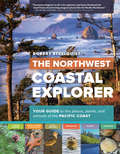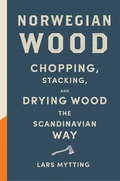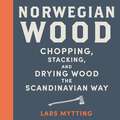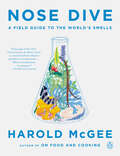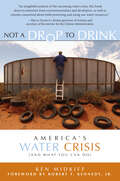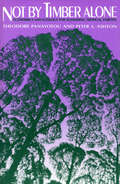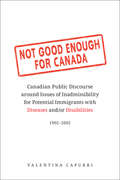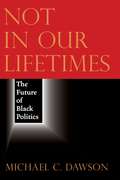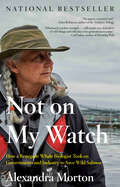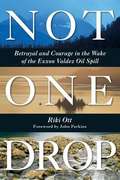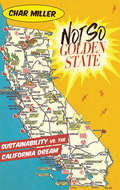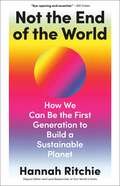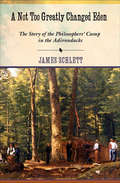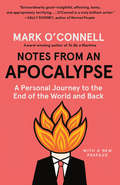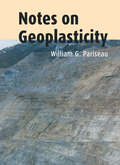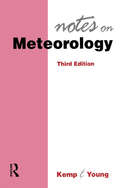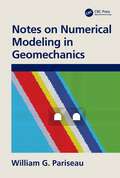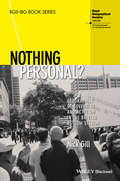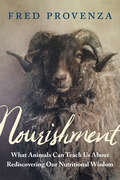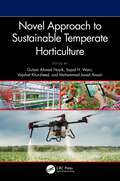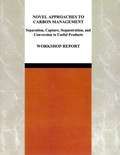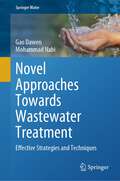- Table View
- List View
The Northwest Coastal Explorer: Your Guide to the Places, Plants, and Animals of the Pacific Coast
by Robert Steelquist“Part field guide, part travel guide, Steelquist writes with the authoritative voice of that friend you want next to you on the trail or in the dunes—the one who knows just where to go for a weekend getaway and what to pack for the Pacific Northwest’s unpredictable weather.” —Portland Monthly Millions of visitors explore the magnificent coastline of the Pacific Northwest and all that it provides—unique plant life, easy-to-find animals, and magical places. The Northwest Coastal Explorer is a fun, engaging, lushly-illustrated guide to the marine life of Oregon, Washington, and British Columbia. Profiles of the flora and fauna include tips on where and how to find them—like the ochre sea stars commonly discovered on exposed rocks and the olive snails found on sandy beaches—while the included getaway guide highlights the best weekend trips for each area.
Norwegian Wood: The guide to chopping, stacking and drying wood the Scandinavian way
by Lars MyttingTHE DEFINITIVE WOOD-CUTTER'S BIBLE - THE BESTSELLING, YEAR-ROUND GUIDE TO CHOPPING, STACKING AND DRYING WOOD "The book has spread like wildfire" Daily Mail"A how-to book with poetry at its heart" T.L.S."A step-by-step guide to preparing your wood store" IndependentWhether you're a seasoned woodcutter, or your passion is yet to be kindled, NORWEGIAN WOOD is an entertaining guide for year-round wood management, and the perfect gift.Chopping and stacking wood is a pastime where the world makes sense once more. Because our relationship to fire is so ancient, so universal, it seems that in learning about wood, you can also learn about life.And who better to impart this wisdom than an expert from Scandinavia, where the extreme climate has obliged generations to hone and share their skills with tools, wood and heat production. Lars Mytting has distilled the wisdom of enthusiasts, from experienced lifelong growers, stackers and burners to researchers and professionals of combustion and tree culture.Part guide to the best practice in every aspect of working with this renewable energy source, part meditation on the human instinct for survival, this definitive handbook on the art of chopping, stacking and drying wood in the Scandinavian way has resonated across the world, with more than a million copies sold worldwide.More than 175,000 copies sold in English editions. The book that defined a genre.
Norwegian Wood: The guide to chopping, stacking and drying wood the Scandinavian way
by Lars MyttingTHE DEFINITIVE WOOD-CUTTER'S BIBLE - THE BESTSELLING, YEAR-ROUND GUIDE TO CHOPPING, STACKING AND DRYING WOOD "The book has spread like wildfire" Daily Mail"A how-to book with poetry at its heart" T.L.S."A step-by-step guide to preparing your wood store" IndependentWhether you're a seasoned woodcutter, or your passion is yet to be kindled, NORWEGIAN WOOD is an entertaining guide for year-round wood management, and the perfect gift.Chopping and stacking wood is a pastime where the world makes sense once more. Because our relationship to fire is so ancient, so universal, it seems that in learning about wood, you can also learn about life.And who better to impart this wisdom than an expert from Scandinavia, where the extreme climate has obliged generations to hone and share their skills with tools, wood and heat production. Lars Mytting has distilled the wisdom of enthusiasts, from experienced lifelong growers, stackers and burners to researchers and professionals of combustion and tree culture.Part guide to the best practice in every aspect of working with this renewable energy source, part meditation on the human instinct for survival, this definitive handbook on the art of chopping, stacking and drying wood in the Scandinavian way has resonated across the world, with more than a million copies sold worldwide.More than 175,000 copies sold in English editions. The book that defined a genre.
Nose Dive: A Field Guide to the World's Smells
by Harold McGeeThe ultimate guide to the smells of the universe - the ambrosial to the malodorous, and everything in between - from the author of the acclaimed culinary guides On Food and Cooking and Keys to Good CookingFrom Harold McGee, James Beard Award-winning author and leading expert on the science of food and cooking, comes an extensive exploration of the awe-inspiring world of smell. In Nose Dive, McGee takes us on a sensory-filled adventure, from the sulfurous nascent earth more than four billion years ago, to the sweetly fragrant Tian Shan mountain range north of the Himalayas, to the keyboard of your laptop, where trace notes of formaldehyde escape between the keys. We'll sniff the ordinary (wet pavement and cut grass) and extraordinary (fresh bread and chocolate), the delightful (roses and vanilla) and the unpleasant (spoiled meat and rotten eggs). We'll smell each other. We'll smell ourselves. Through it all, McGee familiarizes us with the actual bits of matter that we breathe in -- the molecules that trigger our perceptions, that prompt the citrusy smells of coriander and beer and the medicinal smells of daffodils and sea urchins. And like everything in the physical world, molecules have histories. Many of the molecules that we smell every day existed long before any creature was around to smell them -- before there was even a planet for those creatures to live on. Beginning with the origins of those molecules in interstellar space, McGee moves onward through the smells of our planet, the air and the oceans, the forest and the meadows and the city, all the way to the smells of incense, perfume, wine, and food. Here is a story of the world, of all of the smells under our collective nose. A work of astounding scholarship and originality, Nose Dive distills the science behind the smells and translates it, as only McGee can, into an accessible and entertaining guide. Incorporating the latest insights of biology and chemistry, and interwoven with personal observations, McGee reveals how our sense of smell has the power to expose invisible, intangible details of our material world and life, and trigger in us feelings that are the very essence of being alive.
Nossa vez de poluir
by Ronald RwakigumbaTurn to Pollute usa o título de um argumento frequentemente narrado durante as negociações sobre mudanças climáticas, onde as nações menos desenvolvidas postulam que, dado que as nações desenvolvidas causaram a maior parte da poluição no passado, elas têm a obrigação histórica de arcar com os custos associados à mitigação ou adaptação às mudanças climáticas. Simultaneamente, eles também argumentam que, como a poluição através da industrialização é uma consequência inevitável para o desenvolvimento, as nações em desenvolvimento têm de poluir para alcançar o crescimento económico. Dizer o contrário não é novidade, o que falta no discurso é comunicar claramente o crescimento verde como uma alternativa que concilia exactamente os aparentes opostos do desenvolvimento entre objectivos ecológicos e sociais. O que também tem faltado nos discursos é uma abordagem multissetorial ao desenvolvimento sustentável, onde diferentes facetas foram abordadas isoladamente, perdendo a oportunidade que surge de uma abordagem intersetorial. Esta é a jornada apresentada nas 100 páginas de 'Nossa vez de poluir' Começando com um mergulho profundo na sustentabilidade, o livro prossegue introduzindo o valor do ambiente e fornecendo formas de corrigir o que pode ter corrido mal na precificação do ambiente, seguida de uma narração geral da acção climática - ou será inacção? Não menos importante, a energia, que desempenha um papel fundamental no abastecimento das famílias e das economias, requer uma boa análise, que é fornecida num dos últimos capítulos. O que diferencia este livro é a visão holística de conectar os diferentes pontos e traçar um quadro mais completo de como avançamos, e isso está escrito no capítulo final do desenvolvimento sustentável com exemplos, lições e reflexões. Em última análise, estamos nisto juntos, na nossa casa partilhada, a Terra, e que melhor maneira de comunica
Not a Butterfly Alphabet Book: It's About Time Moths Had Their Own Book!
by Jerry PallottaThis nature alphabet book from best-selling author Jerry Pallotta features moths (not butterflies!) of all shapes and sizes.Meet dozens of moths--and a few bonus creatures--with engaging text and a laugh-out-loud narrative, from A (Atlas Moth) to G (Green Lips Moth--no kissing allowed!) to J (Jersey Tiger Moth, whose underwings are a completely different color than their upper wings, not to be confused with their underwear) to Z (Zigzag Moth). Readers of all ages will be entertained (and learning!) with every page turn.
Not a Drop to Drink: America's Water Crisis (and What You Can Do)
by Ken MidkiffWater. We can’t live without it. Not a Drop to Drink sounds the alarm, detailing the current state of emergency facing the U.S. water supply. From the parched High Plains to corporate boardrooms, Ken Midkiff explores water wars, privatization, American agriculture, and global warming. And what we can do to get a glass of water.
Not by Timber Alone: Economics And Ecology For Sustaining Tropical Forests
by Theodore Panayotou Peter AshtonNot by Timber Alone presents the findings of the Harvard Institute for International Development study, commissioned by the International Tropical Timber Organization, that examined the economic value of tropical hardwood forests as productive living systems and the potential for their multiple use management.
Not Good Enough for Canada: Canadian Public Discourse around Issues of Inadmissibility for Potential Immigrants with Diseases and/or Disabilities, 1902–2002
by Valentina CapurriNot Good Enough for Canada investigates the development of Canadian immigration policy with respect to persons with a disease or disability throughout the twentieth century. With an emphasis on social history, this book examines the way the state operates through legislation to achieve its goals of self-preservation even when such legislation contradicts state commitments to equality rights. Looking at the ways federal politicians, mainstream media, and the judicial system have perceived persons with disabilities, specifically immigrant applicants with disabilities, this book reveals how Canadian immigration policy has systematically omitted any reference to this group, rendering them socially invisible.
Not in Our Lifetimes: The Future of Black Politics
by Dawson Michael C.In the aftermath of Hurricane Katrina, polls revealed that only 20 percent of African Americans believed that racial equality for blacks would be achieved in their lifetime. But following the election of Barack Obama, that number leaped to more than half. Did that dramatic shift in opinion really reflect a change in the vitality of black politics--and hope for improvement in the lives of African Americans? Or was it a onetime surge brought on by the euphoria of an extraordinary election? With Not in Our Lifetimes, Michael C. Dawson shows definitively that it is the latter: for all the talk about a new post-racial America, the fundamental realities of American racism--and the problems facing black political movements--have not changed. He lays out a nuanced analysis of the persistence of racial inequality and structural disadvantages, and the ways that whites and blacks continue to see the same problems--the disastrous response to Katrina being a prime example--through completely different, race-inflected lenses. In fact, argues Dawson, the new era heralded by Obama's election ist more racially complicated, as the widening class gap among African Americans and the hot-button issue of immigration have the potential to create new fissures for conservative and race-based exploitation. Bringing his account up to the present with a thoughtful account of the rise of the Tea Parties and the largely successful "blackening" of the president, Dawson ultimately argues that black politics remains weak--and that achieving the dream of racial and economic equality will require the sort of coalition-building and reaching across racial divides that have always marked successful political movements. Polemical but clear-eyed, passionate but pragmatic, Not in Our Lifetimes will force us to rethink our easy assumptions about racial progress--and begin the hard work of creating real, lasting change.
Not on My Watch: How a renegade whale biologist took on governments and industry to save wild salmon
by Alexandra MortonAlexandra Morton has been called "the Jane Goodall of Canada" because of her passionate thirty-year fight to save British Columbia's wild salmon. Her account of that fight is both inspiring in its own right and a roadmap of resistance.Alexandra Morton came north from California in the early 1980s, following her first love--the northern resident orca. In remote Echo Bay, in the Broughton Archipelago, she found the perfect place to settle into all she had ever dreamed of: a lifetime of observing and learning what these big-brained mammals are saying to each other. She was lucky enough to get there just in time to witness a place of true natural abundance, and learned how to thrive in the wilderness as a scientist and a single mother. Then, in 1989, industrial aquaculture moved into the region, chasing the whales away. Her fisherman neighbours asked her if she would write letters on their behalf to government explaining the damage the farms were doing to the fisheries, and one thing led to another. Soon Alex had shifted her scientific focus to documenting the infectious diseases and parasites that pour from the ocean farm pens of Atlantic salmon into the migration routes of wild Pacific salmon, and then to proving their disastrous impact on wild salmon and the entire ecosystem of the coast. Alex stood against the farms, first representing her community, then alone, and at last as part of an uprising that built around her as ancient Indigenous governance resisted a province and a country that wouldn't obey their own court rulings. She has used her science, many acts of protest and the legal system in her unrelenting efforts to save wild salmon and ultimately the whales--a story that reveals her own doggedness and bravery but also shines a bright light on the ways other humans doggedly resist the truth. Here, she brilliantly calls those humans to account for the sake of us all.
Not One Drop
by Riki OttThis DVD/book package should be read and viewed by everyone concerned with crimes against man and nature; about corporate lies and the value of community. Betrayed by oilmen's promises in the 1970s, the people of Prince William Sound, Alaska, awaken on March 14, 1989, to the nation's largest oil spill. Not One Dropis an extraordinary tale of ordinary lives ripped apart by disaster and of community healing through building relationships of trust. This story offers critical lessons for a society traumatized by political divides and facing the looming catastrophe of global climate change. Author Riki Ott, a rare combination of commercial salmon "fisherm'am" and PhD marine biologist, describes firsthand the impacts of oil companies' broken promises when the Exxon Valdez spills most of its cargo and despoils thousands of miles of shore. Ott illustrates in stirring fashion the oil industry's 20-year trail of pollution and deception that predated the tragic 1989 spill and delves deep into the disruption to the fishing community of Cordova over the following 19 years. In vivid detail, she describes the human trauma coupled inextricably with that of the sound's wildlife and its long road to recovery. Black Wave (DVD) -directed by Robert Cornellier, tells the story of the biggest environmental catastrophe in North American history. In a flash, dramatic images shoot across the planet. They show thousands of carcasses of seabirds and sea otters covered in oil. A thick black tide rises and covers the beaches of once-pristine Prince William Sound. For twenty years Riki Ott and the fishermen of the little town of Cordova, Alaska have waged the longest legal battle in U. S. history against the world's most powerful oil company - ExxonMobil. They tell us all about the environmental, social and economic consequences of the black wave that changed their lives forever. Not One DropandBlack Waveshow us how too many corporate owners and political leaders betray everyday citizens and how a community forges a new path from despair to hope.
Not So Golden State: Sustainability vs. the California Dream
by Char MillerIn Not So Golden State, leading environmental historian Char Miller looks below the surface of California's ecological history to expose some of its less glittering conundrums. In this necessary work, Miller asks tough questions as we stand at the edge of a human-induced natural disaster in the region and beyond. He details policy steps and missteps in public land management and examines the impact of recreation on national forests, parks, and refuges, assessing efforts to restore wild land habitat, riparian ecosystems, and endangered species.Why, during a devastating five-year drought, is the Central Valley's agribusiness still irrigating its fields as if it were business as usual? What's unusual, Miller reveals, is that northern counties rich in groundwater sell it off to make millions while draining their aquifers toward eventual mud. Why, when contemporary debate over oil and gas drilling questions reasonable practices, are extractive industries targeting Chaco Canyon National Historic Park and its ancient sites, which are of inestimable value to Native Americans? How do we begin to understand "local," a concept of hope for modern environmentalism? After all, Miller says, what we define as local determines how we might act in its defense.To inhabit a place requires placed-based analyses, whatever the geographic scope--examinations rooted in a precise, physical reality. To make a conscientious life in a suburb, floodplain, fire zone, or coastline requires a heightened awareness of these landscapes' past so that we can develop an intensified responsibility for their present condition and future prospects. Building a more robust sense of justice is the key to creating resilient, habitable, and equitable communities.Miller turns to Aldo Leopold's insight that "all history consists of successive excursions from a single starting point," a location humans return to "again and again to organize another search for a durable scale of values." This quest, a reflection of our ambition to know ourselves in relation to time and space, to organize our energy and structure our insights, is as inevitable as it is unending.Turning his focus to the tensions along the California coastline, Miller ponders the activities of whale watching and gazing at sea otters, thinking about the implications of the human desire to protect endangered flora and fauna, which makes the shoreline a fraught landscape and a source of endless stories about the past and present.In the Los Angeles region these connections are more obvious, given its geography. The San Gabriel Mountains rise sharply above the valleys below, offering some of the steepest relief on the planet. Three major river systems--the Santa Ana, San Gabriel, and Los Angeles--cut through the range's sheer canyons, carrying an astonishing amount of debris that once crashed into low-lying areas with churning force. Today the rivers are constrained by flood-control dams and channels. Major wildfires, sparked by annual drought, high heat, and fierce Santa Ana winds, move at lightning speed and force thousands to flee.The city's legendary smog, whose origins lie in car culture, was fueled in part by oil brought to the region's surface in the late nineteenth century. It left Angelenos gasping for breath as climatic conditions turned exhaust into a toxic ozone layer trapped by the mountains that back in the day were hard to see. Clearing the befouled skies took decades.Every bit as complex is the enduring effort to regenerate riparian health and restore wildlife habitat in a concrete-hardened landscape. The emerging tensions are similar to those threading through the U.S. Forest Service's management of the Angeles National Forest, exacerbated whenever a black bear ambles into a nearby subdivision.How we build ourselves into these spaces depends on the removal of competing users or uses: a historic strawberry patch gives way to a housing development, a memorial forest goes up in smoke, a small creek tells a larger tale of the human impress, and struggles over water-a perennial issue in this dry l...
Not the End of the World: How We Can Be the First Generation to Build a Sustainable Planet
by Hannah RitchieThis "eye-opening and essential" book (Bill Gates) will transform how you see our biggest environmental problems—and explains how we can solve them. It&’s become common to tell kids that they&’re going to die from climate change. We are constantly bombarded by doomsday headlines that tell us the soil won&’t be able to support crops, fish will vanish from our oceans, and that we should reconsider having children. But in this bold, radically hopeful book, data scientist Hannah Ritchie argues that if we zoom out, a very different picture emerges. In fact, the data shows we&’ve made so much progress on these problems that we could be on track to achieve true sustainability for the first time in human history. Did you know that: Carbon emissions per capita are actually down Deforestation peaked back in the 1980s The air we breathe now is vastly improved from centuries ago And more people died from natural disasters a hundred years ago? Packed with the latest research, practical guidance, and enlightening graphics, this book will make you rethink almost everything you&’ve been told about the environment. Not the End of the World will give you the tools to understand our current crisis and make lifestyle changes that actually have an impact. Hannah cuts through the noise by outlining what works, what doesn&’t, and what we urgently need to focus on so we can leave a sustainable planet for future generations. These problems are big. But they are solvable. We are not doomed. We can build a better future for everyone. Let&’s turn that opportunity into reality.
A Not Too Greatly Changed Eden: The Story of the Philosophers’ Camp in the Adirondacks
by James SchlettIn August 1858, William James Stillman, a painter and founding editor of the acclaimed but short-lived art journal The Crayon, organized a camping expedition for some of America's preeminent intellectuals to Follensby Pond in the Adirondacks. Dubbed the "Philosophers' Camp," the trip included the Swiss American scientist and Harvard College professor Jean Louis Rodolphe Agassiz, the Republican lawyer and future U.S. attorney general Ebenezer Rockwood Hoar, the Cambridge poet James Russell Lowell, and the transcendental philosopher Ralph Waldo Emerson, who would later pen a poem about the experience. News that these cultured men were living like "Sacs and Sioux" in the wilderness appeared in newspapers across the nation and helped fuel a widespread interest in exploring the Adirondacks. In this book, James Schlett recounts the story of the Philosophers' Camp, from the lives and careers of--and friendships and frictions among--the participants to the extensive preparations for the expedition and the several-day encampment to its lasting legacy. Schlett's account is a sweeping tale that provides vistas of the dramatically changing landscapes of the United States in the second half of the nineteenth century. As he relates, the scholars later formed an Adirondack Club that set out to establish a permanent encampment at nearby Ampersand Pond. Their plans, however, were dashed amid the outbreak of the Civil War and the advancement of civilization into a wilderness that Stillman described as "a not too greatly changed Eden." But the Adirondacks were indeed changing. When Stillman returned to the site of the Philosophers' Camp in 1884, he found the woods around Follensby had been disfigured by tourists. Development, industrialization, and commercialization had transformed the Adirondack wilderness as they would nearly every other aspect of the American landscape. Such devastation would later inspire conservationists to establish Adirondack Park in 1892. At the close of the book, Schlett looks at the preservation of Follensby Pond, now protected by the Nature Conservancy, and the camp site's potential integration into the Adirondack Forest Preserve.
Notes from an Apocalypse: A Personal Journey to the End of the World and Back
by Mark O'Connell"Harrowing, tender-hearted, and funny as hell" —Jenny Offill&“Fascinating…Oddly uplifting&” —The Economist"Smart, funny, irreverent, and philosophically rich" —Wall Street JournalBy the author of the award-winning To Be a Machine, an absorbing, deeply felt book about our anxious present tense—and coming to grips with the futureWe're alive in a time of worst-case scenarios: The weather has gone uncanny. Old postwar alliances are crumbling. A pandemic draws our global community to a halt. Everywhere you look there's an omen, a joke whose punchline is the end of the world. How is a person supposed to live in the shadow of such a grim future? What does it mean to have children—nothing if not an act of hope—in such unsettled times? What might it be like to live through the worst? And what on Earth is anybody doing about it?Dublin-based writer Mark O'Connell is consumed by these questions—and, as the father of two young children himself, he finds them increasingly urgent. In Notes from an Apocalypse, he crosses the globe in pursuit of answers. He tours survival bunkers in South Dakota. He ventures to New Zealand, a favored retreat of billionaires banking on civilization's collapse. He engages with would-be Mars colonists, preppers, right-wing conspiracists. And he bears witness to those places, like Chernobyl, that the future has already visited—real-life portraits of the end of the world as we know it. In doing so, he comes to a resolution, while offering readers a unique window into our contemporary imagination.Both investigative and deeply personal, Notes from an Apocalypse is an affecting, humorous, and surprisingly hopeful meditation on our present moment. With insight, humanity, and wit, O'Connell leaves you to wonder: What if the end of the world isn't the end of the world?
Notes on Geoplasticity
by William G. PariseauThis book is about geoplasticity, solid mechanics of rock, jointed rock and soil beyond the domain of a purely elastic deformation. Plastic deformation is irreversible and begins at the limit to elasticity with any attempt at further loading. Stress at the limit to elasticity is "strength" which is described by a functional relationship amongst stresses, that is, by a yield function or failure criterion. Mohr-Coulomb, Drucker-Prager and Hoek-Brown criteria are well-known examples in geomechanics. Beyond the elastic limit, but still within the realm of small strain increments, a total strain increment is the sum of an elastic increment and a plastic increment. The elastic increment is computed through an incremental form of Hooke’s law, isotropic or anisotropic as the case may be. Computation of the plastic part is at the core of any plasticity theory and is approached through the concept of a plastic potential. The plastic potential is a function of stresses and perhaps other material parameters such as plastic strain and temperature. Derivatives of the plastic potential with respect to stress lead to the plastic part of the total strain increment. If the yield criterion and plastic potential are the same, then the plastic stress-strain relationships are "associated rules of flow" and follow a "normality" principle. Normality is in reference to a graphical portrayal in principal stress space where the plastic strain increment is perpendicular to the yield surface. If the plastic potential and yield criterion are different, as is often the case in geoplasticity, then the rules of flow are "non-associated". Drucker’s famous stability postulate implies normality at a smooth point on the yield surface, convexity of the yield function and other important features of plasticity theory in geomechanics. However, there is no point to proceeding to theoretical analyses without physical justification. Hence, the physical foundations for application of plasticity theory to rock, jointed rock and soil are examined in Chapter 2 of this book. A brief review of continuum mechanics principles is given in Chapter 3. Chapter 4 focuses on plane plastic strain and "sliplines". The technical literature is replete with numerous diagrams of sliplines, especially in discussions of foundations on soils, but the relevant mathematics is often lacking and with it genuine understanding. Examples illustrate application of theory to traditional geomechanics problems such as computation of retaining wall forces in soils, foundation bearing capacity of soil and rock, wedge penetration of rock under confining pressure and others. Brief discussions of anisotropy, visco-plasticity and poro-plasticity are presented in Chapters 6, 7 and 8. This book will be of interest to civil, geological and mining engineers, particularly those involved in reliable design of excavations and foundations beyond elasticity, especially in jointed rock.
Notes on Meterology
by Richard Kemp Young KempPart of the Kemp and Young series, this book provides a concise introduction to meteorology. Information is presented using diagrams, illustrations and worked examples. Mathematics is kept to a necessary minimum and there is a comprehensive index to aid quick reference. Notes on Meteorology is suitable for First Officer or Master Marine certification exams, those new to sea faring, and those whose practical experience is limited to narrow areas and wish to expand their knowledge.
Notes on Numerical Modeling in Geomechanics
by William G. PariseauThis book is an introduction to numerical analysis in geomechanics and is intended for advanced undergraduate and beginning graduate study of the mechanics of porous, jointed rocks and soils. Although familiarity with the concepts of stress, strain and so on is assumed, a review of the fundamentals of solid mechanics including concepts of physical laws, kinematics and material laws is presented in an appendix. Emphasis is on the popular finite element method but brief explanations of the boundary element method, the distinct element method (also known as the discrete element method) and discontinuous deformation analysis are included. Familiarity with a computer programming language such as Fortran, C++ or Python is not required, although programming excerpts in Fortran are presented at the end of some chapters. This work begins with an intuitive approach to interpolation over a triangular element and thus avoids making the simple complex by not doing energy minimization via a calculus of variations approach so often found in reference books on the finite element method. The presentation then proceeds to a principal of virtual work via the well-known divergence theorem to obtain element equilibrium and then global equilibrium, both expressed as stiffness equations relating force to displacement. Solution methods for the finite element approach including elimination and iteration methods are discussed. Hydro-mechanical coupling is described and extension of the finite element method to accommodate fluid flow in porous geological media is made. Example problems illustrate important concepts throughout the text. Additional problems for a 15-week course of study are presented in an appendix; solutions are given in another appendix.
Nothing Personal?: Geographies of Governing and Activism in the British Asylum System (RGS-IBG Book Series)
by Nick GillIn this groundbreaking new study, Nick Gill provides a conceptually innovative account of the ways in which indifference to the desperation and hardship faced by thousands of migrants fleeing persecution and exploitation comes about. Features original, unpublished empirical material from four Economic and Social Research Council (ESRC) funded projects Challenges the consensus that border controls are necessary or desirable in contemporary society Demonstrates how immigration decision makers are immersed in a suffocating web of institutionalized processes that greatly hinder their objectivity and limit their access to alternative perspectives Theoretically informed throughout, drawing on the work of a range of social theorists, including Max Weber, Zygmunt Bauman, Emmanuel Levinas, and Georg Simmel
Notre tour de polluer
by Ronald RwakigumbaLoin de ralentir le développement, les modèles d’industrialisation respectueux de l’environnement comme l’industrie verte ouvrent la voie à un avenir meilleur. Au-delà du profit, les entreprises soucieuses des personnes et de la planète offrent des rendements plus stables et durables. Il doit y avoir un autre modèle de croissance économique qui dissocie la croissance du PIB de l’augmentation des émissions de gaz à effet de serre (GES). Je postule dans ce livre que si les modèles de développement passés ont permis une croissance grâce à la pollution industrielle, les pays en développement n’ont pas besoin de suivre cette voie. L’industrie verte, qu’elle soit axée sur l’efficacité des ressources, la réduction de la pollution ou la vulnérabilité flagrante à la destruction des moyens de subsistance et des infrastructures induite par l’inaction climatique, montre une plus grande viabilité économique comme voie à suivre. Face au défi de concilier développement et objectifs écologiques, certains ont souvent soutenu que l’industrialisation était une opportunité pour les pays les moins avancés, à qui c’était désormais à leur tour de polluer l’environnement, tout comme les pays développés l’ont fait pendant de nombreuses décennies. D’autres pays ont également fait valoir qu’ils ont encore de quoi polluer, contrairement aux États développés qui sont apparemment surpeuplés et dont l’écosystème est au point de rupture. L’ironie que je vois est que les États développés qui cherchent de plus en plus à dissocier la croissance du PIB de l’augmentation des émissions de GES sont également les mieux préparés à résister aux événements climatiques extrêmes. Ce n'est PAS à notre tour de polluer. Les entreprises ont centré leur seul objectif sur la maximisation de la valeur actionnariale, en partant du principe que les actionnaires supportent uniquement le risque résiduel. Nous
Nourishment: What Animals Can Teach Us about Rediscovering Our Nutritional Wisdom
by null Fred Provenza&“Nourishment will change the way you eat and the way you think.&”—Mark Schatzker, author of The Dorito Effect&“[Provenza is] a wise observer of the land and the animals [and] becomes transformed to learn the meaning of life.&”—Temple GrandinReflections on feeding body and spirit in a world of changeAnimal scientists have long considered domestic livestock to be too dumb to know how to eat right, but the lifetime research of animal behaviorist Fred Provenza and his colleagues has debunked this myth. Their work shows that when given a choice of natural foods, livestock have an astoundingly refined palate, nibbling through the day on as many as fifty kinds of grasses, forbs, and shrubs to meet their nutritional needs with remarkable precision.In Nourishment Provenza presents his thesis of the wisdom body, a wisdom that links flavor-feedback relationships at a cellular level with biochemically rich foods to meet the body&’s nutritional and medicinal needs. Provenza explores the fascinating complexity of these relationships as he raises and answers thought-provoking questions about what we can learn from animals about nutritional wisdom.What kinds of memories form the basis for how herbivores, and humans, recognize foods?Can a body develop nutritional and medicinal memories in utero and early in life?Do humans still possess the wisdom to select nourishing diets or has that ability been hijacked by nutritional &“authorities&”?Is taking supplements and enriching and fortifying foods helping us, or is it hurting us?On a broader scale Provenza explores the relationships among facets of complex, poorly understood, ever-changing ecological, social, and economic systems in light of an unpredictable future.To what degree do we lose contact with life-sustaining energies when the foods we eat come from anywhere but where we live?To what degree do we lose the mythological relationship that links us physically and spiritually with Mother Earth who nurtures our lives?Provenza&’s paradigm-changing exploration of these questions has implications that could vastly improve our health through a simple change in the way we view our relationships with the plants and animals we eat.&“Nourishment is a conversation between science, culture, and a greater spiritual or cosmological umbrella.&”—Montana Public Radio
Novel Approach to Sustainable Temperate Horticulture
by Gulzar Ahmad Nayik Mohammad Javed Ansari Vajahat Khursheed Sajad H. WaniIn the current scenario, marked by a continual improvement in living standards, it becomes imperative to boost the productivity as well as the efficiency of agriculture, especially horticulture, which holds the potential for significant economic prosperity aligning with Sustainable Development Goal number 8, "Decent Work and Economic Growth". Modern technological interventions, such as geospatial technology and geographic information system (GIS) technology, can be harnessed to yield effective results in addressing challenges and providing enhanced decision support, particularly in the planning of horticultural resource management. Cultivation and production of fresh produce face several challenges, including prolonged juvenile phases and reproductive cycles with extended breeding periods, creating bottlenecks in the process. The evolving trends in biotechnology offer promising solutions for improving the selection of desirable traits. Biotechnological techniques aimed at improving fruit efficiency encompass tissue culture, induction of genetic variability, germplasm conservation, and molecular breeding/genomics. These methods involve the study of genetic diversity, DNA fingerprinting, and Quantitative Trait Loci (QTL) analysis for marker-assisted selection. Over the past few decades, the global population has consistently risen, raising concerns about the ability of the current food system to adequately feed the anticipated 10 billion people in the next 30 years. While this challenge is deemed achievable, certain changes in both food production and consumption systems are essential to ensure sustainability, reduce food loss and waste, and contribute to a global shift toward healthier and more sustainable diets. Implementing sustainable models of crop production represents a significant undertaking. To address the growing food demand amid deteriorating production environments, there is a need for promising technologies and effective management options to enhance productivity.This book is poised to be a valuable resource for horticultural scientists operating in universities, government agencies, and research centers, offering insights into achieving sustainable cultivation practices for fruits. It stands out as the first of its kind, providing in‑depth knowledge on environmentally friendly methods for cultivating temperate fruit crops, to reduce harmful emissions and pollution. This book will delve into the application of geographic information system (GIS) for estimating horticulture area expansion and crop yield. Additionally, it will encompass recent biotechnological interventions in horticulture, circular agriculture models, and emerging non‑thermal food preservation techniques as significant components.Features: Aims to provide a comprehensive and integrated overview of current techno-statistical techniques employed in horticulture, delving into the associated livelihood benefits derived from the practice. Explores the novel geographical trends to identify the site suitability indices of several temperate fruits. Offers a comprehensive and integrated exploration of recent trends in biotechnological approaches aimed at enhancing food production, quality, and safety.
NOVEL APPROACHES TO CARBON MANAGEMENT: Separation, Capture, Sequestration, and Conversion to Useful Products
by Committee on Novel Approaches to the Management of Greenhouse Gases from Energy SystemsA report on Novel Approaches to Carbon Management
Novel Approaches Towards Wastewater Treatment: Effective Strategies and Techniques (Springer Water)
by Gao Dawen Mohammad NabiThis book provides an overview of new concept in sustainable technologies for wastewater treatment processes, such as annamox process, granular sludge process, membrane technology, wetlands, and sewage sludge management. With the advancement of water ecological protection and water control standard, it is the general trend to upgrade the wastewater treatment technologies. The simultaneous removal of pollutants is the key to improve the water quality and prevent its further consequences in the downstream. Therefore, it is important to explain/elaborate the new concept of technologies for wastewater treatment. Due to enormous research in the field of wastewater for pollutants removal (particularly COD and N), it is necessary to provide overview in the form of book. The content of this book is of great importance due to their suitability approach covering both environmental protection and market demands (discharge standard). The discovery of anammox process has providedlow-cost and eco-friendly means for treatment of ammonia-rich wastewater with high efficiency, and in this field we (our research group) are pioneer. Therefore, we are interested and confident to write this chapter in our book. The development of aerobic and anaerobic granular sludge process is a better replacement for activated sludge and promises sustainable wastewater treatment for at least the next century. The granular sludge process can simultaneously remove organic carbon, nitrogen, phosphorus, and other pollutants from wastewater, which will be briefly discussed in this book. Wetlands as biological and microbiological approach for wastewater treatment, existing in natural or artificial wetlands and efficiently removing COD and BOD, will be explained in term of design and operation and configurations. Sewage sludge, a residue or by-product of wastewater treatment system, has considerably increased the production over the years. Sludge poses significant risk to both environmentand human health due to its content, pathogens, metal microplastic, and organic matters, if not treated properly. Therefore, its documentation in the form of book is necessary, covering pretreatment implementation, biological treatment, pathogen distribution, and directives around the world. The book primarily not only benefits students, but owing to the great importance of the new concept in wastewater treatment, it is also a valuable work for consulting engineers and other professionals who deal with wastewater treatment.
